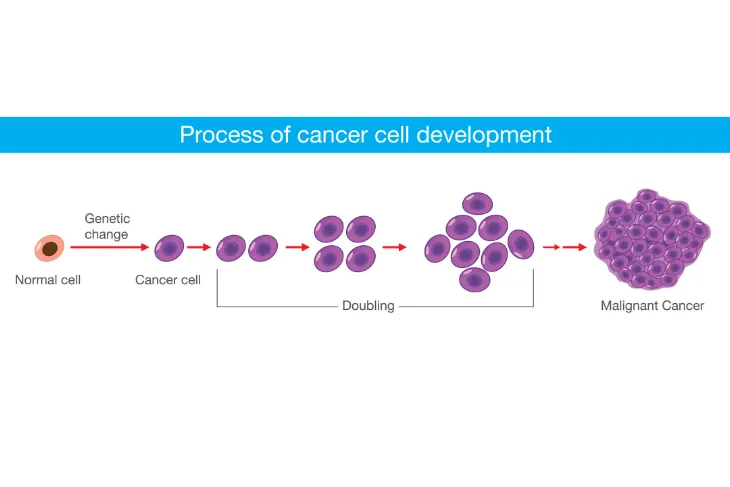Cancer has a huge impact on society, not only in the United States but all around the world. Medical News Today notes that one in two women and one in three men will develop cancer in their lifetime. After a diagnosis, your doctor will determine the stage of your cancer, which will help determine an overview of what to expect, as well as your best treatment options.
If you or someone you know has been diagnosed with cancer, it can be overwhelming. While you may have heard of the four stages of cancer, there is a lot more to know. Let’s dive into what staging is, how the four stages are defined, and what it means for you.
What Is Staging?
Staging is one of the first things your doctor will discuss with you after diagnosing cancer. Staging helps determine how far your cancer has progressed.
Furthermore, “staging helps provide a general prognosis based on others who have been at the same stage at their diagnosis,” says Healthline. This will help determine your outlook (or prognosis) and treatment options.
The Different Staging Systems
Doctors often use a staging system with cancer that ranges from stage 0 to 4. The higher the number is, the more advanced the disease.
Medical News Today also explains, your doctor may also describe your cancer with the following terms:
- “unknown” means your doctor doesn’t have enough information to completely classify your cancer.
- “in situ” refers to if abnormal cells exist but have not spread.
- “localized” means the cancer is present only in the place where it first appeared.
- “regional” refers to if your cancer has spread to any nearby lymph nodes, tissue, or organs.
- “distant” (or metastasis) means your cancer has spread to distant parts of your body.
What is the TNM Staging System?
Along with numbered staging, healthcare professionals also use the TNM system, which helps describe the amount and spread of cancer in your body.
T describes the size of the tumor and whether or not it has spread to any nearby tissue. N is for nodes and helps describe if your cancer has spread to any nearby lymph nodes. M stands for metastasis which describes whether or not your cancer has spread to any other parts of your body.
What Does Tumor Grade Mean?
Tumor grade refers to how cancer cells look under a microscope. The more abnormal the cells appear, the faster they’ll grow and spread.
Keep in mind, a biopsy is the only way to determine the tumor grade. Healthline explains tumor grades are defined as follows:
- GX means it’s undetermined.
- G1 is a low-grade and means the tumor is well differentiated.
- G2 is an intermediate grade and means it’s moderately differentiated.
- G3 is a high grade and means it’s poorly differentiated.
- G4 is also a high grade but means the tumor is undifferentiated.
The Four Stages of Cancer
It’s important to point out not all cancers have stages. For example, leukemia doesn’t have stages because it’s a cancer of the blood and is often referred to as either acute or chronic.
Furthermore, some cancers also have their own system of diagnosis, such as brain cancer. But if your type of cancer does use the staging system, here is what you can expect in each stage.
Stage 0
Stage 0 refers to pre-cancer or cancer that hasn’t yet spread to other areas of your body. The National Cancer Institute explains it’s often referred to as carcinoma in situ.
During this stage, the cells are not yet cancer; however, they can become cancer if left untreated. In general, treatment may require the removal of the cells and the surrounding tissue. The survival rate at this stage is high, but it will, of course, vary depending on the type of cancer you have.
Stage 1
Stage 1, also known as localized, is an early stage and typically means the cancer is small and hasn’t spread. Treatment for this stage typically involves radiation therapy or surgery to remove the cancerous cells.
In general, stage 1 cancer has a high survival rate, especially compared to advanced stages of cancer. However, the treatment and survival rate will vary based on your type of cancer.
Stage 2
Stage 2 means the cancer has grown a bit larger. The cancer is localized, but it may have spread into surrounding tissue or lymph nodes.
Your treatment options, as well as your outlook in this stage, will vary based on your age, overall health, and the type of cancer that you have. Although, in general, stage 2 often has a high survival rate and is treatable.
Stage 3
Stage 3 is more advanced cancer and means the tumor is still localized, but it’s typically larger than stages 1 and 2. In this stage, your cancer may also spread regionally or into the nearby lymph nodes.
Treatment will vary depending on your type of cancer and the location. Treatments are also typically more aggressive. The survival rate of stage 3 cancer is usually lower than stages 1 and 2, but it will also depend on other factors, such as your overall health and age.
Stage 4
Stage 4 is the most advanced stage of cancer. If your doctor determines you have stage 4 cancer, it typically means the tumor is very large and your cancer has spread to other areas of your body.
Treatment is often aggressive and aims to slow (or stop) the spread of cancer. Some treatment options include chemotherapy, radiation therapy, targeted therapy, and surgery. The survival rate is a “generally less favorable outlook than other stages of cancer,” says Medical News Today. However, your age, overall health, and type of cancer will all play a role in your survival.
What Tests Determine the Stage of Cancer?
To determine the stage of your cancer, your doctor may need to perform a variety of tests.
Some of these may include mammography, X-rays, computed tomography (CT) scans, magnetic resonance imaging (MRI), positron emission tomography (PET) scans, ultrasound, endoscopy, colonoscopy, prostate-specific antigen (PSA) tests, biopsy, or blood tests.
Your Outlook
There are many factors that will contribute to your prognosis, such as your age, overall health, and the type of cancer you have. But, your cancer stage will help provide a general overview of what you can expect including your treatment options and survival rate.
The good news is your doctor will work with you every step of the way. If you ever feel overwhelmed or confused, never be afraid to ask your doctor for clarification to better understand the type of cancer you are battling.















